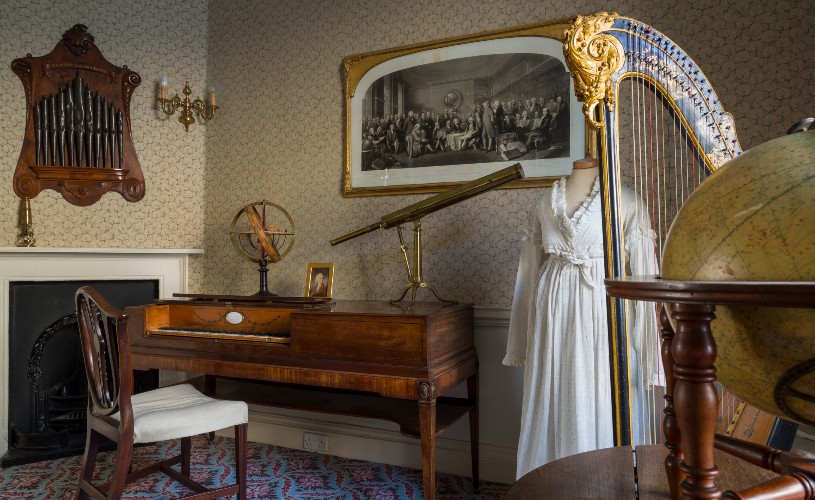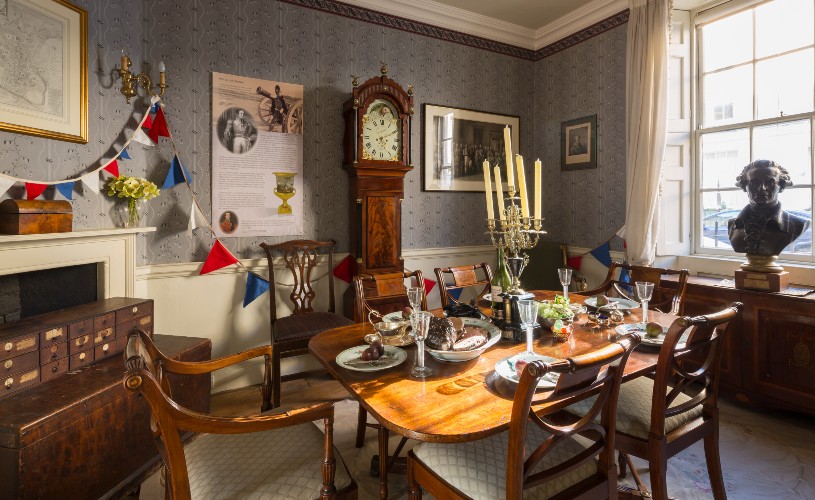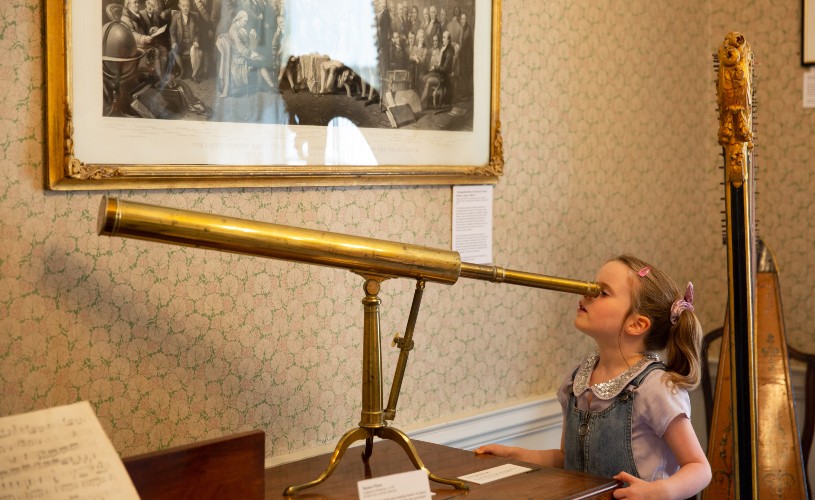25th August 2022 is the bicentenary of the death of Bath-based astronomer William Herschel (1738 – 1822). To commemorate this anniversary, Bath Preservation Trust has opened a major exhibition highlighting the hugely important achievements and contributions he made to our understanding of space.
Discover more about why Herschel was such a significant figure, his life here in Bath, and what you can find at the exhibition.
The Herschels in Bath
A gifted composer, William Herschel came to Bath in 1766 to try his fortune as a professional musician. He was later joined by his youngest sister Caroline, who journeyed from the family home in Hanover to run William’s household. Although Caroline was unused to being in the public eye and had only a smattering of English upon her arrival in Bath, she was soon performing soprano parts in concerts arranged by William. Both developed a passion for observational astronomy that was to change their lives.
 - Credit Herschel Museum of Astronomy, Bath Preservation Trust.jpg) Image - William Herschel (1738 – 1822) - Credit Herschel Museum of Astronomy, Bath Preservation Trust
Image - William Herschel (1738 – 1822) - Credit Herschel Museum of Astronomy, Bath Preservation Trust
Remembering their life in 19 New King Street – the home of the Herschel Museum of Astronomy – Caroline noted that ‘almost every room in the house turned into a workshop’ with William ‘grinding glasses and turning eye pieces’ to build his famous telescopes.
19 New King Street is where William Herschel discovered the planet Uranus in March 1781. In doing so, he doubled the size of the known universe. What makes this achievement even more remarkable is that Herschel was a self-taught amateur astronomer, who built his own telescopes at home.

Image - The Music Room at Herschel Museum of Astronomy, credit Chris Lacey
The Herschel Home Turned Museum
Number 19 forms part of a terrace built around 1764. When the Herschels moved here for the first time in 1777, the bustling street was filled with the noise and mess of builders and the road was still un-metalled. The modest townhouse (laid out over five floors) is typical of the houses of ‘the middling sort’ – that is, artisans and tradesmen. It is a contrast to the grand Georgian houses rented by visitors for the Bath season – such as No.1 The Royal Crescent (another historic house museum which, like the Herschel Museum of Astronomy, is run by the Bath Preservation Trust).

Image - Herschel Museum of Astronomy, credit Chris Lacey
The Grade II* listed building was purchased with the help of Doctors Leslie and Elizabeth Hilliard in 1981. The house has been fully restored in the authentic style of the period. Dr Brian May is the Museum’s patron – like William Herschel before him, both a musician and an astronomer.
The Herschel 200 Exhibition
Organised in partnership with the Royal Astronomical Society, the Herschel 200 exhibition is open at the museum until the end of the year. It explores William’s early life as a musician teaching and performing in Bath and travelling across the UK, while developing his interest in astronomy. Visitors will find out about his innovations and discoveries, collaborations with his siblings, Caroline and Alexander, and the legacy he left behind.

Image - Herschel Museum of Astronomy
Thanks to a partnership with Slough Museum, the exhibition also features the Herschel’s Slough story. William and Caroline moved to Observatory House in Slough when William became the King’s Astronomer and Caroline also took a salary as a professional astronomer.
The Royal Astronomical Society has loaned William’s observing notebook, which includes his notes from the night (13th March 1781) when he first observed the planet Uranus, as well as a catalogue of stars recorded by Caroline. Also on display are never before exhibited letters from William to his brother Alexander, loaned from the Herschel family collection. A miniature portrait of William has also been loaned by the family.
On top of the landmark exhibition, there are a number of additional activities and events during the 200th anniversary commemorations, including planetarium shows and free workshops.
On 25th August, a commemorative stone will be unveiled in the garden of 19 New King Street, to not only mark the anniversary of William’s passing but also serve as a telescope platform. The stone will mark the very spot where Herschel first glimpsed Uranus, allowing visitors to contemplate the moment, during a crisp March night in 1781, when William spotted the planet using a homemade telescope. It’s an object that at its closest to earth is 1.6 billion miles (2.6 billion kilometres) away, and at its furthest a staggering 1.98 billion miles (3.2 billion km).
Start planning your visit to Herschel 200. Our Spotify playlist with music by Herschel and other space-themed songs makes for perfect listening in the build up:
Read more about notable Bath residents:
Related
Comments
Comments are disabled for this post.






